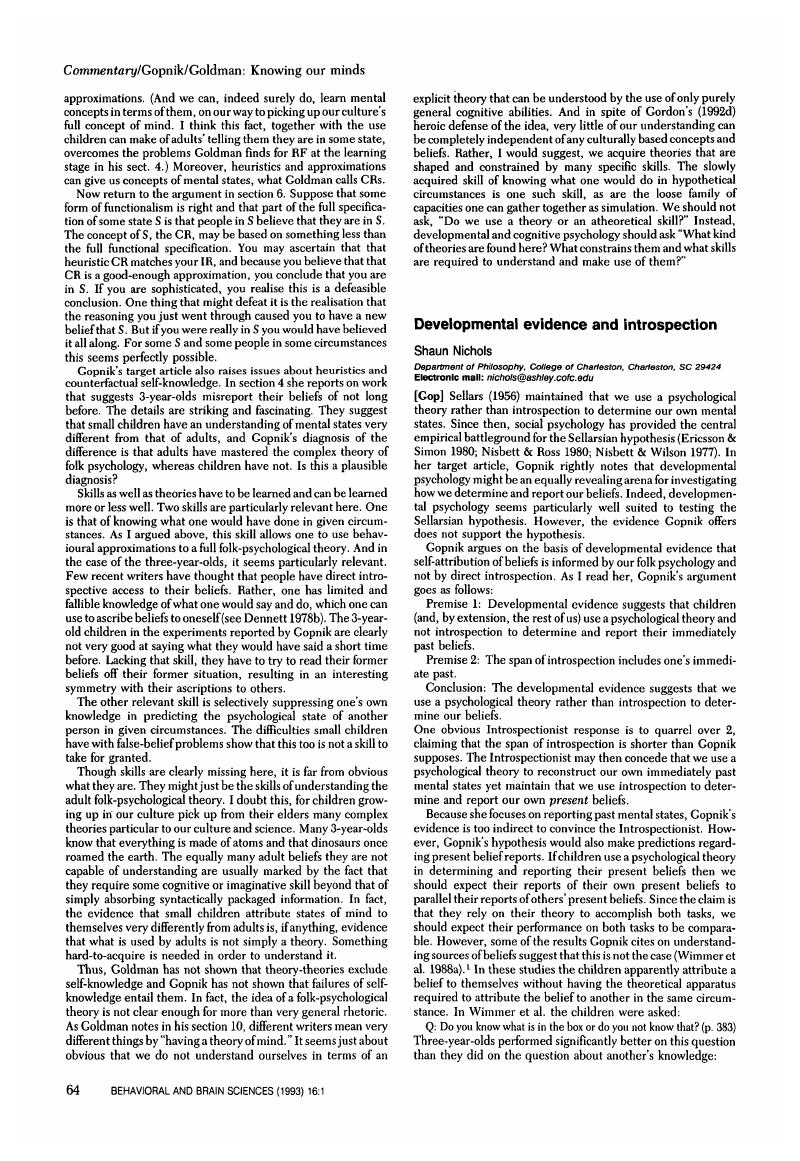Crossref Citations
This article has been cited by the following publications. This list is generated based on data provided by Crossref.
van Brakel, J.
1995.
Interpreting self-ascriptions.
Behavioral and Brain Sciences,
Vol. 18,
Issue. 2,
p.
393.
Greve, Werner
and
Buchner, Axel
1995.
Speaking of beliefs: Reporting or constituting mental entities?.
Behavioral and Brain Sciences,
Vol. 18,
Issue. 2,
p.
391.
Goldman, Alvin I.
1995.
Epistemology, two types of functionalism, and first-person authority.
Behavioral and Brain Sciences,
Vol. 18,
Issue. 2,
p.
395.
Gopnik, Alison
1995.
How to understand beliefs.
Behavioral and Brain Sciences,
Vol. 18,
Issue. 2,
p.
398.
Pust, Joel
1995.
Two kinds of representational functionalism: Defusing the combinatorial explosion.
Behavioral and Brain Sciences,
Vol. 18,
Issue. 2,
p.
392.
Bogdan, Radu J.
1995.
The epistemological illusion.
Behavioral and Brain Sciences,
Vol. 18,
Issue. 2,
p.
390.
Nichols, Shaun
and
Stich, Stephen
2004.
Reading One's Own Mind: Self-Awareness and Developmental Psychology.
Canadian Journal of Philosophy Supplementary Volume,
Vol. 30,
Issue. ,
p.
297.



